A Cherokee County, Alabama lawyer killed the Sheriff and fled to Texas
A Transcription of Hugh Cardon’s HISTORY OF CHEROKEE COUNTY, ALABAMA
Part VI
Mr. Hugh Cardon wrote the following history of Cherokee County on the occasion of the 100th anniversary of the county in 1936. This history was published in the COOSA RIVER NEWS on Friday, August 7, 1936. Mr. Cardon was a much-respected historian of the county and a collector of antiques and Indian artifacts. He died February 11, 1953. The Historical Society collected a number of his articles written for the public press published them from time to time. The following article was preserved by Mr. J. Robert Embry of the Blanche, Lookout Mountain Valley, Little River Area and loaned it to the Historical Society.
The courthouse in (Cherokee County) was removed from Singleton Hughes to Jefferson, now Cedar Bluff, on June 24, 1837. The first Sheriff was Robert Bell; County Judge, George Birdwell; Clerk of Circuit Court, John Wilson, Senator, Solomon C. Smith, and Rep. George Clifton.
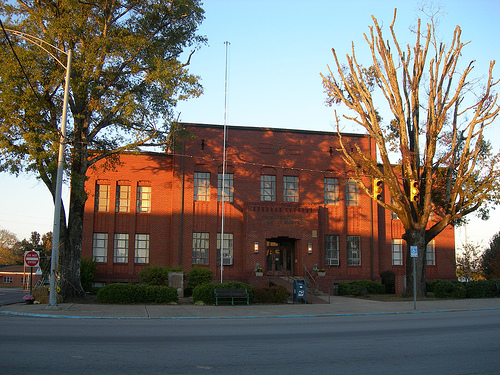 Cherokee County Courthouse in Centre 2014
Cherokee County Courthouse in Centre 2014
Jefferson was a thriving metropolis
Jefferson soon became a thriving metropolis, people from all over the globe settling there. Capt. Joel Thorp of Bridgeport, Massachusetts, and Maj. Pauline Meidjzelski, a citizen of Poland, established a saw, planing, and flour mill, which was operated by steam. This was the first steam mill brought to the old Cherokee part of Georgia and Alabama.
An Old Mill at Pleasant Gap, Cherokee County, Alabama
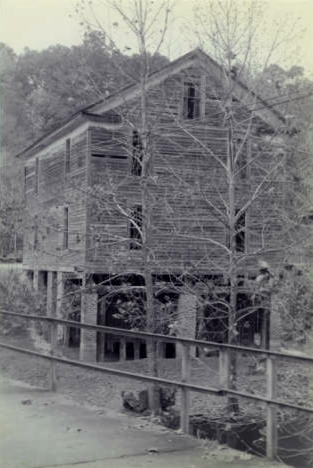 An Old Mill at Pleasant Gap, Cherokee County, Alabama (Alabama Department of Archives and History)
An Old Mill at Pleasant Gap, Cherokee County, Alabama (Alabama Department of Archives and History)
Located in a four-story building
The machinery was shipped from Pittsburg to Gunter’s Landing by boat and brought by wagons to Jefferson. It consisted of one 120 h.p. steam engine, two sash and one circular saw and was located in a four-story building, something indeed novel in this sylvan land.
A tannery was established by John McGhee in 1838, foundry and machine shop by Milner, Nichols, Hallett, and Nesbit. These industries, with a wagon shop, six stores, and two hotels, surrounded the public square on which was erected a log court house. In 1842 the name of Jefferson was changed to Cedar Bluff.
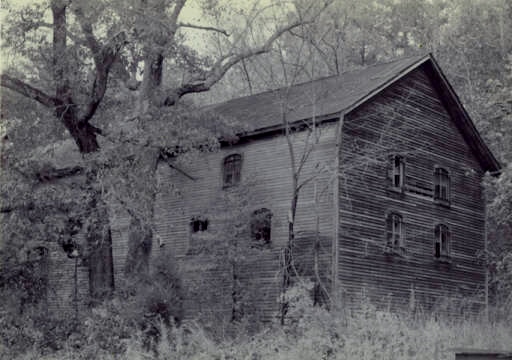 Old Mill Rock Run, Cherokee County, Alabama (Alabama Department of Archives and History)
Old Mill Rock Run, Cherokee County, Alabama (Alabama Department of Archives and History)
The lawyer and editor killed Stallings and fled to Texas
Probably no town in the nation can boast of having had as many newspapers as Cedar Bluff, certainly no town of the same size. In 1843, Hinton established the “Gladiator”, which was followed by the “Palladium” the “Messenger”, the “Sentinel” the “Olive Branch”. We are only concerned, however, with two of these journals.
The “Messenger” was purchased in 1854 by Edward Stiff, who later with his son, LaFayette Stiff, edited the “Sentinel”. No editor has ever been more fearless or wielded as virile a pen as Stiff the Elder. He was a man of wide and various experiences, having edited papers in New York and Cincinnati, and written a book on his travels, called “The Texas Immigrant.” His editorial frankness and biting condemnation of the habits and morals of some of his fellow citizens made his existence miserable and life a gamble with odds all against him.
He fled to Texas
It seems that Hinton, a lawyer and former editor, had slain Sheriff Stallings, and then fled to Texas. Stiff accused a group of the leading citizens of blocking the extradition of Hinton, among whom was the town’s leading lawyer, Judge Mathew J. Turnley. Out of these charges and counter charge, Stiff was beset and beaten insensible and survived only to be again attacked, but killed his assailant.
As a result of this fiasco, Stiff was placed in jail at Ashville, one having never been built at Cedar Bluff. He later was released, journeyed to Cuba, and returned to Centre to live with his son, L. M. Stiff, who edited Centre’s first paper, the “Coosa River Argus” Having been an advocate of the opening of the Coosa as a medium of transportation, since his removal to Cherokee County,
Stiff requested shortly before his death that he be buried on the Coosa with his head facing the river so that he could watch “the damned steamboats go by!” His people honored his request, He is buried at Garrett’s Ferry, just below the resting place of Path Killer, the last King of the Cherokees.
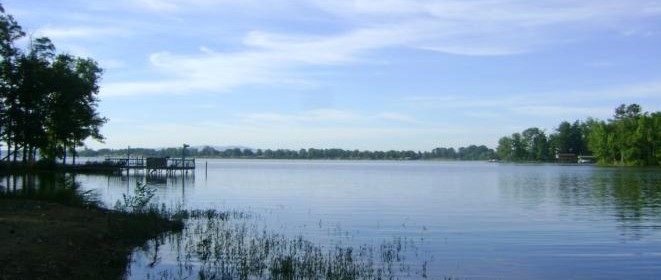 Lake Weiss, Coosa River near Cedar Bluff (courtesy landwatch.com)
Lake Weiss, Coosa River near Cedar Bluff (courtesy landwatch.com)
The Stiff family with newspapers in Cherokee County from 1845 to 1925 or for a successive period of eighty years, Washington C. Stiff, the son of’ LaFayette II. Stiff, being the last of the family editors, the name dying with him.
ALABAMA FOOTPRINTS Exploration: Lost & Forgotten Stories (Volume 1) is a collection of lost and forgotten stories about the people who discovered and initially settled in Alabama.
is a collection of lost and forgotten stories about the people who discovered and initially settled in Alabama.
Some stories include:
- The true story of the first Mardi Gras in America and where it took place
- The Mississippi Bubble Burst – how it affected the settlers
- Did you know that many people devoted to the Crown settled in Alabama –
- Sophia McGillivray- what she did when she was nine months pregnant
- Alabama had its first Interstate in the early days of settlement



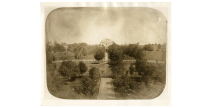
Is there any way to search for any mention of family in the Cherokee County newspapers . 1850-1870
I googled old newspapers for genealogy and a whole lot came up. Some were free. Just google. And good luck in your genealogy quest.
What year did this happen?
But he did not shoot the deputy!
[…] histories of the Rock Run Iron Company in Alabama Blast Furnaces by Joseph H. Woodward, nor one by Hugh Cardon in 1936 for the Cherokee Historical Society. These three histories do mention that an early version […]